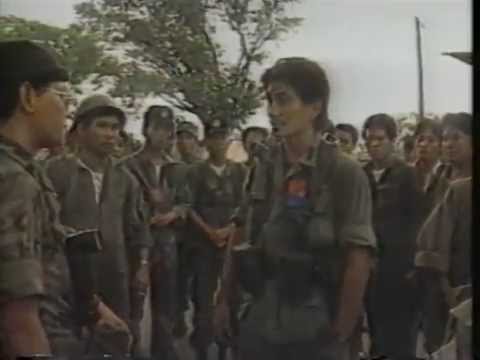8 Unfortunate Events in Philippine History that Happened in August
Aug 10, 2015 • Koko Campiglio

Aug 10, 2015 • Koko Campiglio
They say that those who don’t know their history are doomed to repeat it, and indeed sometimes a look back can be helpful to either avoid things or see the tell-tale signs in order to prevent them. What other purpose would history serve if we didn’t learn from the lessons it has taught us?
The month of August has been host to a number of significant events in the history of the Philippines. Here are 8 unfortunate events that happened this month, some of which helped shape and define our history as well as our future.
There are very few accounts about it, but what is known is that the Great Fire of Manila was so devastating that virtually the whole city was razed to the ground. Including but not restricted to the cathedral, monastery, hospital, fort and government supplies. The fire was so intense that it reduced the artillery to molten metal. This event was an opportunity to rebuild Manila, which at the time was already dated in design. Then Governor-General Santiago De Vera used this incident to mandate that all structures from that point onward be built with stone.
On August 26, 1896, seven days after its discovery, Bonifacio and his men tore their cedulas. This is now known as the Cry of Pugadlawin, the event that signaled the beginning of the Philippine Revolution.
During the election campaign of the Liberal Party, with more than 4,000 in attendance, two hand grenades were reportedly tossed onto the stage.
Initially, the Liberals put suspicion on then President Marcos. In later years, the blame was shifted to the Communist Party of the Philippines, with accounts stating that it was done under the order of Jose Maria Sison–a claim that he denies to this day. This was a stepping stone in the sequence of events that led to the declaration of Martial Law.
“The Writ of Habeas Corpus is a recourse in law whereby a person can report an unlawful detention or imprisonment before a court, usually through a prison official.”
In response to the uproar against the government due to the Plaza Miranda Bombing, President Ferdinand Marcos suspended the Writ of Habeas Corpus. Martial Law was declared in late September that same year.
A few minutes after midnight on August 17, 1976, a violent earthquake with a magnitude of 7.8 occurred in the island of Mindanao. It spawned a tsunami that devastated more than 700 kms of coastline bordering the Moro Gulf in the North Celebes Sea. This offshore event generated by Cotabato trench, a less prominent trench system in the Philippines, was the largest tsunamigenic earthquake to have occurred in Mindanao in the last two decades. It was an earthquake that resulted in massive destruction of property and loss of lives (an estimated 8,000 were killed). The tsunami contributed immensely to the devastation.
Incensed, the Filipino people organized the People Power Revolution, which succeeded in overcoming Martial Law. It was the first revolution of the 20th century to succeed in a regime change by using civil resistance and peaceful, nonviolent means.

In the early years of Cory Aquino’s term as president, six coup attempts were launched by the RAM (Reform the Armed Forces Movement). The bloodiest coup attempt took place on August 28. This ended with 53 people dead and 200 wounded. Many of the fatalities were unarmed civilians who were shot by rebels via open fire after they were jeered by the crowd. Government troops eventually fizzled the plot.
Five years ago on August 23rd, a disgruntled former PNP officer named Rolando Mendoza hijacked a tourist bus in Rizal Park. The bus carried 20 tourists, a tour guide from Hong Kong, and four local Filipinos. Negotiations took a long time but ten hours into the standoff, everything went sideways when the police arrested Mendoza’s brother. This seems to have been what triggered Mendoza to open fire.
The bus driver managed to escape, shouting “Everyone is dead” as he ran from the bus.
Following a gun battle that lasted an hour and a half, Mendoza and 8 of the hostages were killed, with several others injured. The Philippine and HK governments set up separate investigations into the incident and both inquiries concluded that the poor handling of the police respondents on-site led to the mishandling and casualties.
Do you know any other significant events in our history that happened this month? Share it with us in the comments below!
Input your search keywords and press Enter.
